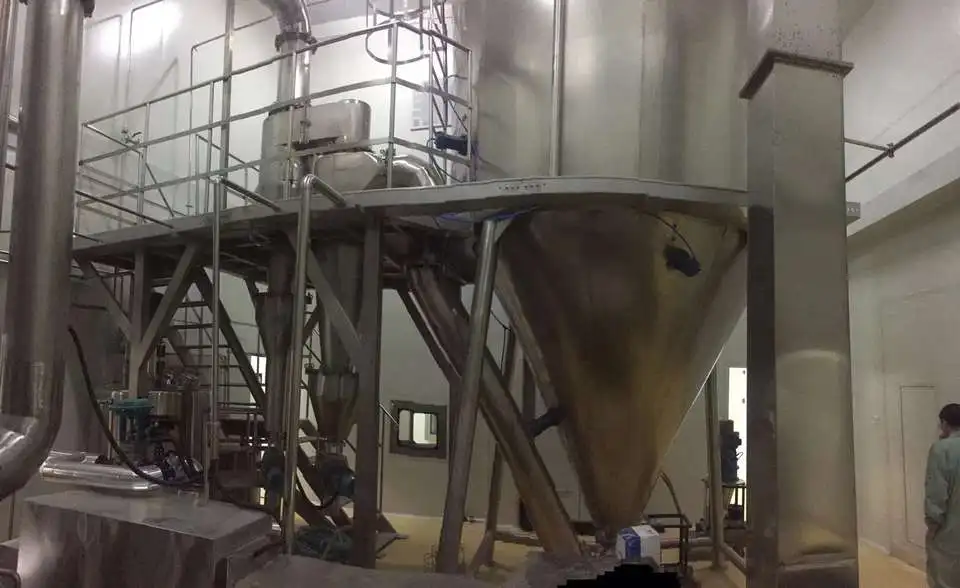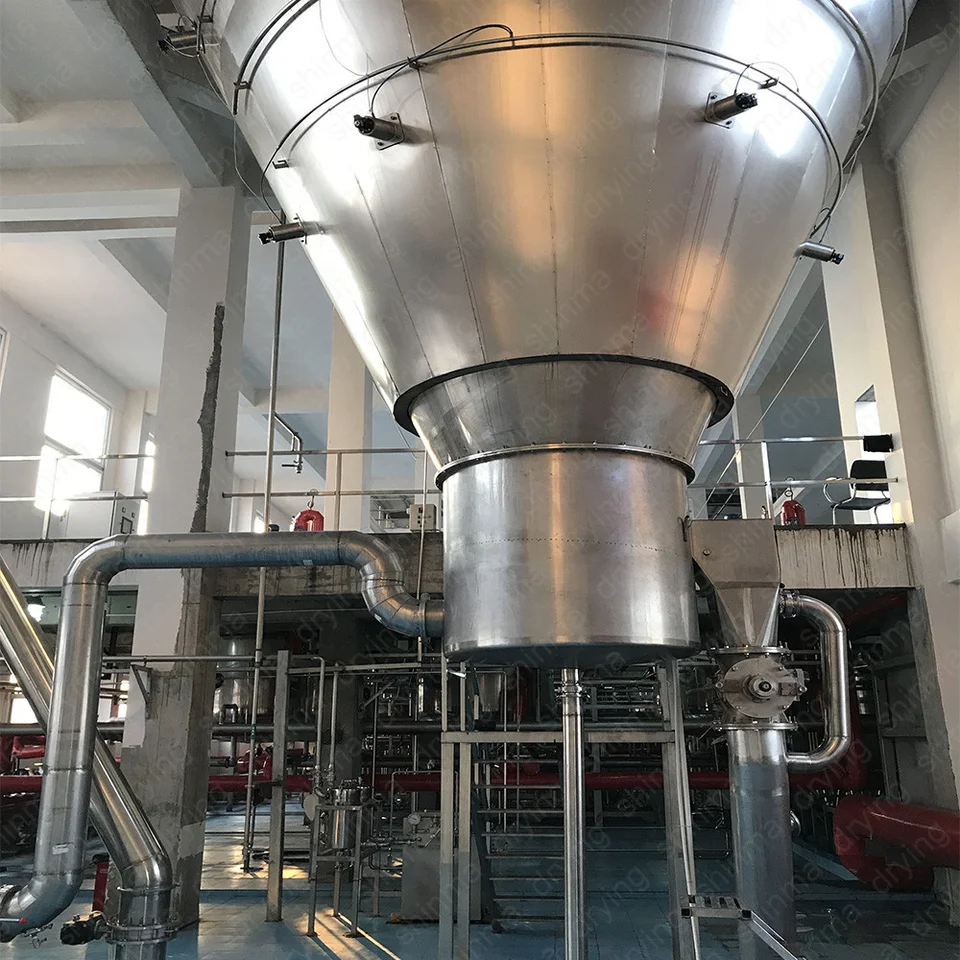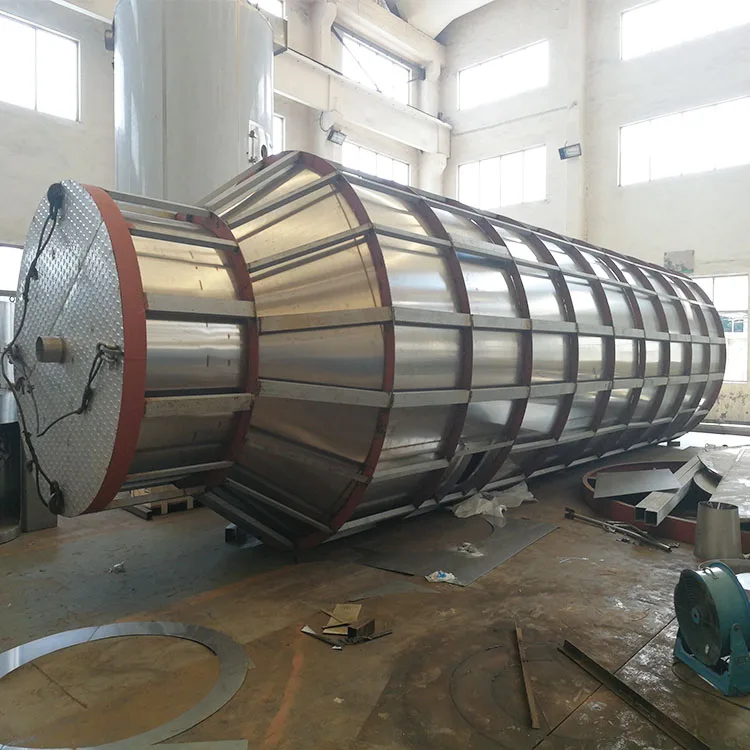Comment fonctionnent les machines à séchage à l'air chaud et ce qui les fait vibrer

Lorsque vous utilisez une machine à séchage à l'air chaud, L'air chaud souffle sur les vêtements ou les mains mouillés pour éliminer l'humidité. Dans de nombreuses maisons et lieux publics, Vous remarquerez peut-être que ces machines prennent plus de temps à sécher les choses par rapport aux serviettes, et parfois les résultats sont moins complets. Par exemple, Une machine à séchage à l'air chaud laisse souvent des objets 55-70% sec, Pendant que les serviettes atteignent 85-90%. Cette différence est importante lorsque vous voulez un séchage rapide et approfondi.
Principaux à retenir
Les machines à séchage à l'air chaud utilisent la chaleur, flux d'air, et un mouvement de dégagement pour éliminer l'humidité des vêtements rapidement et uniformément.
Parties clés comme la chambre de séchage, source de chaleur, ventilateur, tambour, capteurs, filtre à peluche, et le système d'échappement travaillent ensemble pour rendre le séchage efficace et sûr.
Choisir le bon type de sécheuse, comme ventilé ou sans évent et électrique ou gaz, dépend de votre espace, Besoins énergétiques, et le budget.
Entretien régulier, y compris le nettoyage du filtre et l'évent, maintient votre sécheuse qui fonctionne bien, Économise de l'énergie, et empêche les risques d'incendie.
L'utilisation de sécheuses avec des capteurs d'humidité et des caractéristiques d'économie d'énergie aide à protéger vos vêtements et à réduire vos factures d'électricité.
Composants de la machine à séchage à l'air chaud

Lorsque vous regardez à l'intérieur d'un Machine de séchage à l'air chaud, Vous trouvez plusieurs pièces importantes travaillant ensemble. Chaque partie joue un rôle spécial pour s'assurer que vos vêtements ou vos articles sèchent rapidement et uniformément. Décomposons les principales parties d'un sèche.
Chambre de séchage
La chambre de séchage est l'endroit où vous placez vos vêtements mouillés ou vos articles. Cet espace est généralement fabriqué à partir de acier inoxydable, ce qui le maintient fort et facile à nettoyer. De nombreuses chambres de séchage ont des étagères ou des plateaux réglables, afin que vous puissiez installer différents articles à l'intérieur. Par exemple, Une chambre typique peut tenir n'importe où 25 à 3,000 litres, Selon le modèle. Tu pourrais voir commandes numériques à l'extérieur, vous laisser régler la température et le temps de séchage.
Source de chaleur
La source de chaleur est ce qui réchauffe l'air à l'intérieur de la sécheuse. Vous pouvez trouver radiateurs électriques, brûleurs à gaz, ou même des systèmes à vapeur dans différentes machines. Les radiateurs électriques sont courants car ils sont faciles à utiliser et en sécurité. Certains séchoirs industriels utilisent de la vapeur ou même des déchets de chaleur pour économiser de l'énergie. Chaque type de source de chaleur a ses propres avantages, comme le coût, vitesse, Et à quel point c'est propre.
Souffleur ou ventilateur
Le Le souffleur ou le ventilateur pousse l'air chaud à travers la chambre de séchage. Cette partie d'une sécheuse s'assure que l'air se déplace autour de vos vêtements, les aider à sécher plus rapidement. Si le ventilateur fonctionne bien, tu obtiens flux d'air constant et des temps de séchage plus courts. Si le ventilateur ou les conduits sont bloqués, Le séchage prend beaucoup plus de temps. Gardez toujours le ventilateur et les sentiers aériens propres pour les meilleurs résultats.
Tambour ou gobelet
Le tambour ou le gobelet tient vos vêtements et les tourne pendant le séchage. Ce mouvement laisse l'air chaud atteindre chaque partie du tissu. Quand le tambour tourne, Les vêtements ne restent pas ensemble, Alors ils sèchent plus uniformément. La vitesse et la taille du tambour peuvent changer à quelle vitesse vos vêtements sèchent.
Thermostats et capteurs
Les thermostats et les capteurs regardent la température et l'humidité à l'intérieur du séchoir. Ces parties d'une sécheuse aident à maintenir la chaleur au bon niveau. Si les choses deviennent trop chaudes, Le sèche-linge se refroidira pour protéger vos vêtements. Certains séchoirs utilisent des écrans numériques pour vous montrer les paramètres actuels.
Filtre à peluche
Le filtre de peluche attrape de petites fibres et de la poussière qui se détachent de vos vêtements. Cette partie d'un sèche-linge maintient le flux d'air solide et empêche les charpons de se développer à l'intérieur de la machine. Vous devez nettoyer le filtre à charpie après chaque charge pour garder votre sécheuse en sécurité et efficace.
Système d'échappement
Le système d'échappement élimine l'air humide de la chambre de séchage. Cette partie d'un sèche-linge aide à se débarrasser de la vapeur d'eau, Alors tes vêtements sèchent plus vite. Certains séchoirs utilisent l'échappement pour récupérer la chaleur et économiser de l'énergie. Un bon système d'échappement peut améliorer la vitesse de séchage et réduire les coûts énergétiques.
Conseil: Les machines de séchage à l'air chaud industriel peuvent également avoir des caractéristiques supplémentaires telles que les échangeurs de chaleur ou les systèmes d'élimination de l'humidité. Ceux-ci aident à économiser de l'énergie et à rendre le séchage encore plus efficace.
Comment fonctionne un sèche-linge

Comprendre le fonctionnement d'un sèche-linge à vêtements vous aide à obtenir les meilleurs résultats de votre lessive. Le processus utilise l'air chaud, constant flux d'air, et un mouvement de dégagement pour éliminer l'humidité de vos vêtements. Décomposons chaque étape afin que vous puissiez voir ce qui se passe à l'intérieur de votre sécheuse.
Apport aérien et chauffage
Lorsque vous commencez votre sèche-linge, Il tire de l'air à travers une grande ouverture à l'avant. La machine dessine cet air devant un puissant élément chauffant qui utilise entre 4,000 et 6,000 watts. Cet élément chauffe rapidement l'air, Le transformer en air chaud qui est prêt à sécher vos vêtements. L'air chaud se déplace ensuite dans le tambour à travers des trous à l'arrière, s'assurer que chaque partie de la charge se réchauffe.
Conseil: Plus l'air est chaud, Plus vite il peut absorber l'humidité de vos vêtements. Cependant, Trop de chaleur peut endommager les tissus, Alors votre séchoir utilise des thermostats pour maintenir la température juste.
Circulation de l'air
La circulation de l'air est le cœur de la façon dont un sèche-linge fonctionne. Le ventilateur ou le ventilateur pousse l'air chaud à travers le tambour, Où tes vêtements tombent. Alors que l'air chaud se déplace, Il ramasse l'humidité des tissus humides. La recherche montre que la façon L'air circule à l'intérieur de la sécheuse affecte non seulement à quelle vitesse vos vêtements sèchent, mais aussi à quelle quantité de peluches et de microfibres sont libérés dans l'environnement. Une bonne conception de flux d'air améliore les performances de séchage et aide à protéger vos vêtements et la planète.
Le ventilateur maintient l'air chaud en mouvement.
L'air traverse le tambour, Toucher tous les vêtements.
L'air humide sort par des trous dans la porte et se déplace vers l'échappement.
Tumbling et élimination de l'humidité
Le tambour tourne vos vêtements, les soulever et les laisser tomber pour que l'air chaud puisse atteindre chaque surface. Cette action tumultueuse est la clé de la façon dont un sèche-linge fonctionne. Des études montrent que Le tumbling doux aide à éliminer l'humidité plus uniformément et réduit les dégâts du tissu. La vitesse et la direction du tambour peuvent changer le fonctionnement de votre sécheuse. La rotation plus rapide ou inversée peut stimuler les performances de séchage et économiser de l'énergie. Le mouvement de culbutage aide également à prévenir les rides et maintient vos vêtements doux.
Note: La dégagement non seulement accélère le séchage, mais protège également vos vêtements contre le rétrécissement ou la raide.
Échappement et ventilation
Après que l'air chaud absorbe l'humidité, il doit quitter la sécheuse. L'air humide se déplace à travers un filtre à peluche, qui attrape de minuscules fibres et poussières. Alors, l'air coule un conduit dans un ventilateur, qui le pousse à travers un évent d'échappement à l'arrière de la sécheuse. Cette étape élimine la vapeur d'eau de vos vêtements et continue le processus de séchage. Un bon système d'échappement s'assure que votre sécheuse fonctionne efficacement et en toute sécurité.
Voici un regard étape par étape sur le fonctionnement d'un sèche-linge du début à la fin:
L'air entre dans le sèche-linge à travers une grande ouverture avant.
L'air passe un élément chauffant qui utilise 4,000 à 6,000 watts pour créer de l'air chaud.
L'air chaud se déplace dans le tambour, où il contacte les vêtements tumulants et absorbe l'humidité.
L'air humide sort par des trous dans la porte et une fente en bas.
L'air passe par l'écran de peluche pour piéger des peluches.
L'air coule un conduit dans un ventilateur centrifuge.
Le ventilateur expulse l'air humide à travers un conduit d'échappement, Éliminer l'humidité de vos vêtements.
Souviens-toi: Nettoyez le filtre à charpie après chaque charge pour garder votre sécheuse en douceur et pour éviter les incendies.
En comprenant comment fonctionne un sèche-linge, Vous pouvez utiliser votre machine plus efficacement et garder vos vêtements à leur meilleur. La combinaison de l'air chaud, flux d'air fort, et le culbutement régulier s'assure que votre linge sèche rapidement et uniformément.
Types de machines à séchage à l'air chaud
Lorsque vous choisissez une sécheuse, Vous en verrez beaucoup types. Chacun fonctionne d'une manière différente et répond aux besoins différents. Regardons les principaux types que vous pourriez trouver.
Ventilé vs. Sans voûte
Vous trouverez deux modèles principaux: ventilées et sans éventualité. Un séchoir ventilé pousse chaud, Air humide à l'extérieur à travers un conduit. Ce type fonctionne bien si vous avez une place pour l'évent. Il sèche rapidement les vêtements et maintient votre buanderie plus froide. Un sèche-linge, d'autre part, recycle l'air à l'intérieur de la machine. Il utilise un échangeur de chaleur pour éliminer l'humidité de l'air avant de le renvoyer dans le tambour. Vous n'avez pas besoin d'un évent, Vous pouvez donc mettre cette sécheuse presque partout. Les séchoirs sans évent utilisent souvent moins d'énergie, mais peuvent prendre plus de temps pour terminer les cycles de séchage.
Conseil: Si vous vivez dans un appartement ou un endroit sans accès facile à un mur extérieur, Un sèche-linge peut être un choix intelligent.
Électrique vs. Gaz
Vous pouvez choisir entre séchoirs électriques et gaziers. Les deux types utilisent un ventilateur pour déplacer l'air chaud à travers vos vêtements. La principale différence est la façon dont ils chauffent l'air. Un sèche-linge électrique utilise un élément chauffant alimenté par l'électricité. Un séchoir à gaz utilise un brûleur à gaz. Voici une comparaison rapide:
Facteur de comparaison | Séchoir électrique | Séchoir à gaz |
|---|---|---|
Unité de consommation d'énergie | kwh | Thermons |
Coûts de réparation | Inférieur, Réparations nécessaires plus tard | Plus haut, Réparation du brûleur plus commune |
Durée de vie et de fiabilité | Durée de vie plus longue | Le brûleur dure 5-10 années |
Coûts d'installation | Peut avoir besoin de mise à niveau du panneau | Peut nécessiter une installation de ligne de gaz |
Influenceurs de coûts d'exploitation | Tarifs électriques locaux | Changements de prix du gaz |
Vous pouvez choisir une sécheuse électrique si votre maison a suffisamment d'énergie électrique et de tarifs stables. Un séchoir à gaz peut économiser de l'argent si vous avez déjà une conduite de gaz.
Variantes industrielles
Les séchoirs industriels gérent de grandes charges et des produits spéciaux. Vous verrez ces machines dans les usines, fermes, et les usines de transformation des aliments. Certains utilisent séchage naturel de l'air, qui économise de l'énergie en utilisant de l'air extérieur. Autres, Comme Shivvers Counter-Flow Systems, Séchez plus rapidement et offrez un meilleur contrôle mais besoin de plus de soins. Par exemple, un sèche-linge à petite échelle pour manioc Utilise un tuyau long et une vitesse d'air élevée pour stimuler l'efficacité. Certaines usines utilisent THEAUX DES UNITÉS DE CLIMISATION pour sécher les produits comme les tranches de banane, Rendre le processus plus durable. Séchoirs plus récents Mélanger les micro-ondes et l'air chaud Pour réduire le temps de séchage et améliorer la qualité. Les ingénieurs utilisent modèles informatiques Pour s'assurer que le sèche-linge se réchauffe uniformément et assure la sécurité des produits.
Note: Les séchoirs industriels ont souvent besoin de contrôles et de nettoyage réguliers pour les maintenir bien et pour protéger la qualité du produit.
Conseils d'utilisation et de maintenance
Choisir une machine
Lorsque vous choisissez une sécheuse, Vous en voulez un qui correspond à vos besoins et économise de l'énergie. Beaucoup de gens regardent les rapports des consommateurs pour comparer les modèles. Ces rapports testent chaque séchoir pour la puissance de séchage, consommation d'énergie, et la sécurité. Vous pouvez trouver des notes pour des fonctionnalités telles que les capteurs d'humidité et la technologie de la pompe à chaleur. Les sécheurs qualifiés en étoile énergétique utilisent 20-40% Moins d'électricité que les modèles standard. Quelques modèles, comme les séchoirs à pompe à chaleur Whirlpool et LG, Économisez encore plus d'énergie mais peut prendre plus de temps pour sécher une charge complète.
Vous devriez également réfléchir à la façon dont une sécheuse affectera votre maison. Des temps de séchage plus longs peuvent augmenter les coûts de chauffage ou de refroidissement. Si vous utilisez une laveuse qui tourne plus d'eau, Votre séchoir n'aura pas à travailler aussi dur. Recherchez une sécheuse avec un bon capteur d'humidité. Cette fonction aide à arrêter le cycle lorsque vos vêtements sont secs, Économiser de l'énergie et protéger vos tissus.
Conseil: Vérifiez les rapports des consommateurs ou les étiquettes d'étoiles énergétiques avant d'acheter une nouvelle sécheuse. Ces ressources vous aident à trouver les machines les plus efficaces et les plus fiables.
Bases de maintenance
Prendre soin de votre sécheuse le maintient bien en marche et l'aide à durer plus longtemps. L'entretien régulier maintient également votre maison et vos factures d'énergie basses. Voici quelques étapes simples que vous pouvez suivre:
Nettoyez l'écran de charpie avant chaque utilisation pour éviter le colmatage et garder votre sécheuse efficace.
Gardez l'évent à l'écart des peluches et des débris afin que l'air puisse couler librement.
Ajustez les pieds du sèche-linge pour vous assurer que la machine reste à niveau et stable.
Réglez la minuterie pour éviter de sur-sécher ou de sous-sécher vos vêtements.
Maintenir l'élément chauffant et le ventilateur de souffleur pour une chaleur régulière et un flux d'air.
Des études montrent que les soins réguliers, comme Nettoyage des filtres et vérification des fuites, prolonge la durée de vie de votre sécheuse et empêche les réparations coûteuses. Les fabricants recommandent Suppression quotidienne de peluches, Chèques trimestriels des pièces internes, et service professionnel annuel. Suivre ces étapes aide votre sécheuse à mieux fonctionner et à protéger vos vêtements.
Note: Une sécheuse bien entretenue sèche les vêtements plus rapidement, utilise moins d'énergie, et réduit le risque de feu. Faire de l'entretien une habitude pour les meilleurs résultats.
Vous savez maintenant que les machines à séchage à l'air chaud utilisent la chaleur, flux d'air, et mouvement pour sécher vos vêtements ou vos articles. Chaque partie, du tambour à l'échappement, joue un rôle clé pour faire du séchage rapide et sûr. Lorsque vous choisissez une machine bien conçue et gardez-la maintenue, Vous obtenez de meilleurs résultats et économisez de l'énergie.
Catégorie de prestations | Avantage clé |
|---|---|
Les séchoirs à pompe à chaleur utilisent moins d'énergie | |
Réduction du temps de séchage | Designs avancés des vêtements secs plus rapidement |
Qualité du produit | Le séchage contrôlé maintient les articles en meilleur état |
L'entretien régulier aide votre sécheuse à travailler efficacement et assure votre maison. Faites-en une habitude pour la meilleure performance.
FAQ
À quelle fréquence devriez-vous nettoyer le filtre de peluche dans votre sécheuse?
Vous devez nettoyer le filtre de peluche après chaque charge. Cela fait bien fonctionner votre sécheuse et aide à prévenir les incendies. Un filtre propre aide également vos vêtements à sécher plus rapidement.
Pouvez-vous sécher tous les types de tissus dans un sèche-linge?
Vous pouvez sécher la plupart des tissus, Mais certains articles délicats peuvent rétrécir ou être endommagés. Vérifiez toujours l'étiquette de soins sur vos vêtements. Utiliser la chaleur inférieure pour la laine, soie, ou tissus synthétiques.
Pourquoi votre sécheuse prend-elle plus de temps à sécher les vêtements parfois?
Un filtre à charpie obstrué ou un évent bloqué peut ralentir le séchage. Des charges lourdes ou des tissus épais prennent également plus de temps. Assurez-vous de ne pas surcharger le tambour.
Que devriez-vous faire si votre sèche-linge sent mauvais?
D'abord, Nettoyez le filtre et le tambour. Faites passer le sèche-linge vide avec une tasse de vinaigre blanc sur une serviette. Cela aide à supprimer les odeurs. Si l'odeur reste, Vérifiez la moisissure ou appelez un technicien.
Est-il sûr de laisser votre sécheuse courir lorsque vous n'êtes pas à la maison?
Tu ne devrais pas partir Votre séchoir Courir sans surveillance. Une accumulation de peluches ou des pièces défectueuses peut provoquer des incendies. Restez toujours à proximité et éteignez le sèche-linge lorsque vous quittez la maison.





